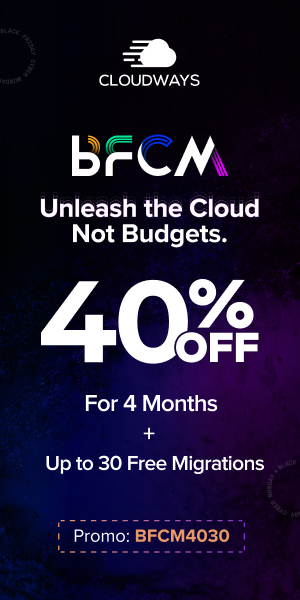Ready to Begin? Start Trading ETH on a Secure Crypto Exchange

Ethereum is a decentralized, open-source blockchain platform that enables developers to build and deploy smart contracts and decentralized applications (dApps). Launched in 2015 by Vitalik Buterin and a team of co-founders, Ethereum has become the second-largest cryptocurrency platform by market capitalization, following Bitcoin. The Ethereum network operates on a unique consensus mechanism known as Proof of Stake (PoS), which was fully implemented with the Ethereum 2.0 upgrade, transitioning from the earlier Proof of Work (PoW) model.
This shift not only enhances the network’s scalability and energy efficiency but also allows for greater participation in the validation process, as users can stake their Ether (ETH) to earn rewards. Ether, the native cryptocurrency of the Ethereum network, serves multiple purposes. It is used primarily as a medium of exchange within the ecosystem, facilitating transactions and powering dApps.
Additionally, Ether is required to pay for transaction fees, known as “gas,” which are necessary for executing smart contracts and conducting transactions on the network. The value of Ether is influenced by various factors, including market demand, technological advancements, and the overall health of the Ethereum ecosystem. As more developers create innovative applications and services on Ethereum, the demand for Ether is likely to increase, making it an attractive asset for traders and investors alike.
Choosing a Trading Platform
Selecting the right trading platform is a crucial step for anyone looking to engage in cryptocurrency trading. The ideal platform should offer a user-friendly interface, robust security measures, and a variety of trading options. Popular platforms such as Coinbase, Binance, and Kraken provide a range of features that cater to both novice and experienced traders.
If you’re ready to step into crypto, now’s a smart time to start trading ETH. Ethereum is not only the second-largest cryptocurrency but also the backbone of many blockchain applications. On MEXC, you’ll get access to fast execution, detailed charts, and a secure trading environment. With just a few clicks, you can begin your ETH trading journey and take advantage of the market’s potential.
For instance, Coinbase is known for its simplicity and ease of use, making it an excellent choice for beginners. In contrast, Binance offers advanced trading tools and a wider selection of cryptocurrencies, appealing to more seasoned traders seeking diverse investment opportunities. Security is another paramount consideration when choosing a trading platform.
Given the prevalence of cyberattacks in the cryptocurrency space, it is essential to select a platform that employs strong security protocols, such as two-factor authentication (2FA), cold storage for funds, and regular security audits. Additionally, regulatory compliance is vital; platforms that adhere to local laws and regulations provide an added layer of protection for users. Researching user reviews and feedback can also provide insights into the reliability and trustworthiness of a trading platform.
Setting Up Your Wallet
Once you have chosen a trading platform, the next step is to set up a cryptocurrency wallet to store your Ether securely. Wallets come in various forms, including hardware wallets, software wallets, and mobile wallets. Hardware wallets, such as Ledger Nano S or Trezor, are physical devices that store your private keys offline, providing enhanced security against hacking attempts.
Software wallets, on the other hand, are applications that can be installed on your computer or smartphone. While they offer convenience for frequent transactions, they are generally considered less secure than hardware wallets. When setting up your wallet, it is crucial to follow best practices for security.
This includes creating strong passwords, enabling two-factor authentication where possible, and regularly backing up your wallet information. Additionally, it is essential to understand the difference between custodial and non-custodial wallets. Custodial wallets are managed by third-party services that hold your private keys on your behalf, while non-custodial wallets give you full control over your keys and funds.
Many experienced traders prefer non-custodial wallets for their autonomy and security.
Learning the Basics of Trading
Before diving into trading Ether or any other cryptocurrency, it is essential to grasp the fundamental concepts of trading. This includes understanding market orders, limit orders, and stop-loss orders. A market order allows you to buy or sell an asset at the current market price, while a limit order enables you to set a specific price at which you want to buy or sell.
Stop-loss orders are designed to minimize losses by automatically selling an asset when it reaches a predetermined price point. In addition to order types, traders should familiarize themselves with technical analysis and charting tools. Technical analysis involves studying price charts and patterns to predict future price movements based on historical data.
Common indicators used in technical analysis include moving averages, Relative Strength Index (RSI), and Bollinger Bands. Understanding these tools can help traders make informed decisions about when to enter or exit positions. Moreover, keeping an eye on market sentiment through news articles and social media can provide valuable insights into potential price movements.
Managing Risks and Setting Goals
Risk management is a critical aspect of successful trading in the volatile cryptocurrency market. One effective strategy is to determine your risk tolerance before entering any trades. This involves assessing how much capital you are willing to risk on each trade and setting appropriate position sizes accordingly.
A common rule of thumb is to risk no more than 1-2% of your total trading capital on a single trade. This approach helps protect your portfolio from significant losses while allowing for potential gains. Setting clear trading goals is equally important in managing risks effectively.
Goals should be specific, measurable, achievable, relevant, and time-bound (SMART). For instance, you might set a goal to achieve a 10% return on your investment within three months or to complete a certain number of trades per week. By establishing these goals, you can maintain focus and discipline in your trading activities.
Additionally, regularly reviewing your performance against these goals can help identify areas for improvement and refine your trading strategy over time.
Staying Informed and Adapting to Market Changes
Staying Informed
Following reputable news sources, joining online forums or communities dedicated to cryptocurrency trading, and subscribing to newsletters can help you stay updated on the latest happenings in the space.
Adaptability is Key
Moreover, adaptability is key in navigating the ever-changing landscape of cryptocurrency trading. Market conditions can shift dramatically due to various factors such as regulatory announcements or macroeconomic events. Being able to adjust your trading strategy in response to these changes can significantly enhance your chances of success.
Successful Trading
For example, if you notice increased volatility in the market due to external factors, you may choose to adopt a more conservative approach by reducing your position sizes or implementing tighter stop-loss orders. In conclusion, understanding Ethereum and Ether lays the foundation for successful trading in this vibrant ecosystem. By carefully selecting a trading platform, setting up a secure wallet, learning the basics of trading strategies, managing risks effectively, and staying informed about market changes, traders can navigate the complexities of cryptocurrency trading with greater confidence and skill.








